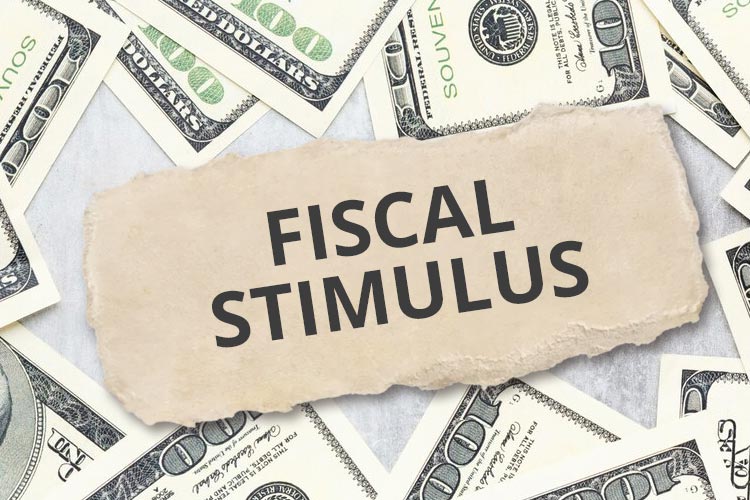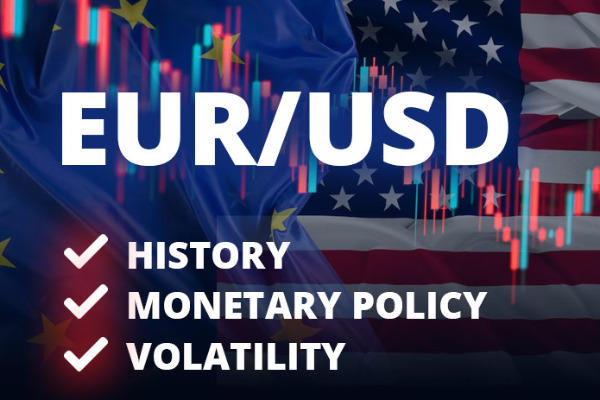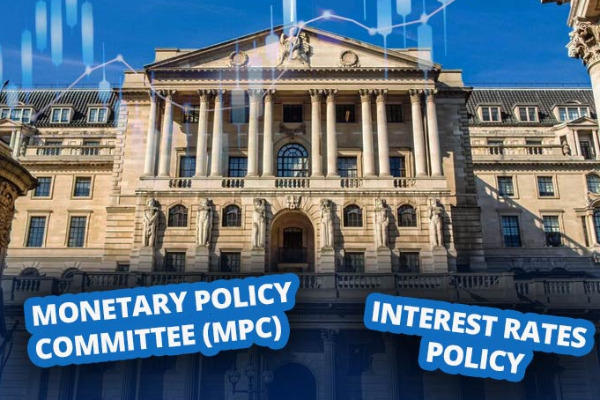Fiscal stimulus has a direct impact on currency exchange rates. However, many traders don't know what fiscal stimulus is and how it differs from monetary stimulus.
Since the COVID pandemic hit, fiscal stimulus has often been discussed in economic news. Monetary stimulus is no longer considered effective in some countries, so many governments feel the need to launch fiscal stimulus.
The discussion intensifies when it comes to forex pairs involving the Japanese Yen (JPY), Euro (EUR), and so on. However, some beginners may misunderstand fiscal stimulus as monetary stimulus.

Understanding Fiscal Stimulus
In economics, there are two types of policies that authorities can use to influence the economy, namely monetary policy and fiscal policy. Monetary policy relates to the circulation of money in the economy and is directly related to the central bank. Meanwhile, fiscal policy relates to government revenue and expenditure.
Fiscal policy is more lagging in effect than monetary policy. According to John Caverley's The Investor's Guide to Economic Fundamentals, the impact of monetary policy can appear in 3 months and end after about 12 months; while the impact of fiscal policy appears in the range of 9-24 months. However, both are not long-term.
The fiscal stimulus itself is a policy from the government to increase their spending budget to boost the economy. This event is also often referred to as "budget relaxation" or "expansionary fiscal policy". The following are forms of fiscal stimulus:
- Tax cuts (personal and/or corporate).
- Fund aids (e.g. unemployment benefits, pension funds, etc.).
- Public infrastructure development (e.g. roads, railways, ports, highways, etc.).
The opposite of fiscal relaxation is fiscal tightening (contractionary fiscal policy). Examples of fiscal tightening measures by the government can include tax increases, aid cuts, or reductions in public infrastructure development budgets. Both fiscal relaxation and tightening will continue to be carried out by the government to adjust to the country's economic conditions.
Interestingly, some countries are strongly against launching fiscal stimulus as it is considered wasteful, such as Germany.
What is the Impact of Fiscal Stimulus on the Forex Market?
Fiscal stimulus aims to increase demand in the short term, creating the impression of rapid economic growth. The policy can also be used to target specific sectors, thereby encouraging investors to flock to those sectors. But what is the impact on currency exchange rates?
The Bullish Impact
News related to fiscal stimulus usually makes investors expect an end to economic slowdown or an increase in GDP growth. On the other hand, the government needs additional revenue to fund the stimulus. So, where can the government get this additional revenue? The answer is debt.
When the government launches massive fiscal stimulus, they will sell more government bonds. The inflow of money will be used to buy bonds, thus pushing their currency rate in the short term.
However, the announcement of fiscal stimulus usually has a limited impact. If compared to the signals that typically appear on forex calendars, it would only be given a two-star rating (considered medium impact). How so?
- The fiscal policy has a more lagging influence than monetary policy.
- The impact of fiscal stimulus on exchange rates will turn bearish in the long term.
The Bearish Impact
When the government cuts taxes or launches fund aids, your money would automatically increase, right? You can then spend money on shopping, traveling abroad, or buying property. As a result, domestic demand will increase.
However, if domestic supply does not match the increased demand, imports will escalate. Increased imports can lead to a trade deficit, causing the currency exchange rate to weaken.
In addition, if you have a lot of money, you are ready to spend it without hesitation. The prices of goods and services will also increase, and that will automatically apply to products that will be exported.
In the end, the prices of export products will become increasingly uncompetitive in the international market, so foreign demand will decrease and exports will decline. A decline in exports leads to a trade deficit that once again leads to weakening the currency.
The government's debt to finance fiscal stimulus will also burden the country's budget in the long term. If the fiscal stimulus is well-targeted, it will not be difficult for the country to pay off the principal and interest on the debt. However, if the fiscal stimulus target is not well-planned and well-executed, the country will end up in difficulties. Ultimately, an economic crisis, default, or even asset takeover by creditors can occur.
Conclusion
It can be concluded that fiscal stimulus is a form of policy issued by the government related to the national budget. The impact of fiscal policy is more lagging than that of monetary policy. Here's a summary of the differences between fiscal policy and monetary policy:
- Fiscal policy is related to the national budget, while monetary policy is related to interest rates.
- Fiscal policy is issued by the government, while monetary policy is issued by the central bank.
- The impact of fiscal policy is more lagging or slower on the economy than monetary policy.
Regarding currency exchange rates, the impact of fiscal stimulus can be bullish and bearish. Bullish impact occurs in the short term due to the purchase of government bonds, while bearish impact occurs in the long term due to trade deficit.
If you're a type of trader who tends to perceive the market in the long term, you may consider to implement the position trading strategy. Such a method frequently monitors fundamental aspects in the market, including when a fiscal stimulus is announced.

 Dedicated FREE FOREX VPS
Dedicated FREE FOREX VPS Free FOREX Virtual Private Server
Free FOREX Virtual Private Server MT4 Demo Contest, Get $500
MT4 Demo Contest, Get $500 Sign Up for an Account, Claim 60% Deposit Bonus
Sign Up for an Account, Claim 60% Deposit Bonus Free MT4/MT5 VPS 2024
Free MT4/MT5 VPS 2024 Send E-mail and Get Free Merchandise
Send E-mail and Get Free Merchandise $1K Refer a Friend Bonus for Pepperstone Pro clients
$1K Refer a Friend Bonus for Pepperstone Pro clients Maximize Your Earnings with 100% Deposit bonus
Maximize Your Earnings with 100% Deposit bonus Trade to Win, $5,000 Monthly Demo Contest
Trade to Win, $5,000 Monthly Demo Contest Claim 30% + 15% Deposit Bonus from LiteFinance
Claim 30% + 15% Deposit Bonus from LiteFinance







